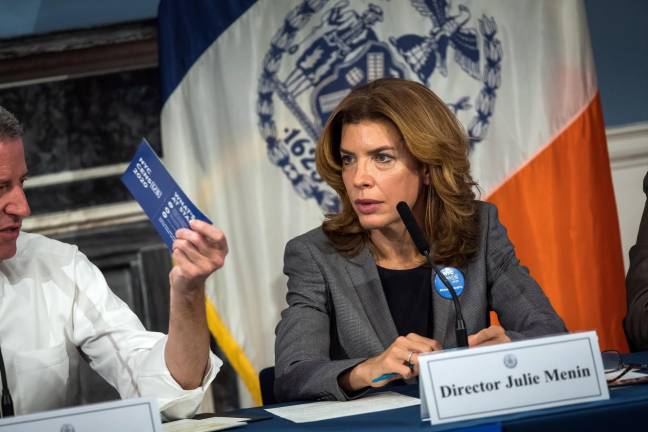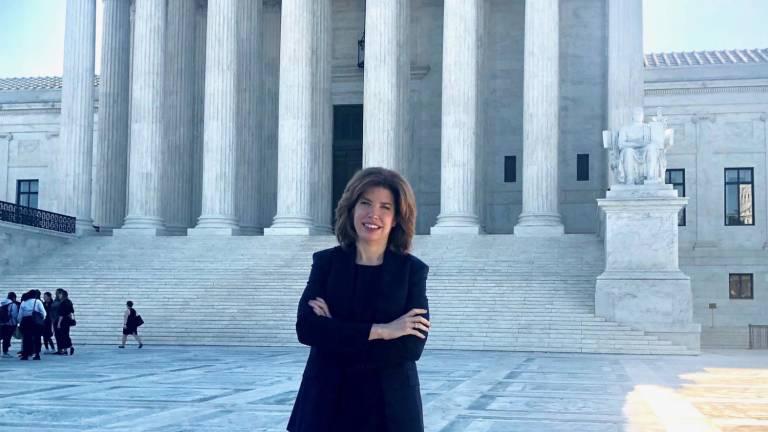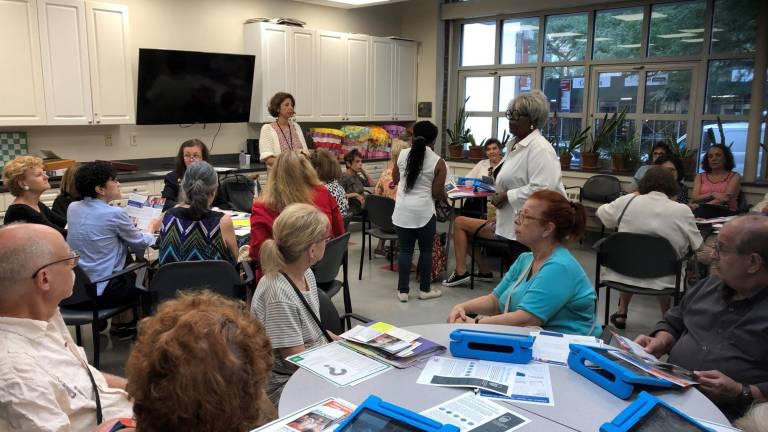'We're Going to Get Counted'
NYC officials launch outreach initiatives to counter public anxiety over the census



Although the Supreme Court blocked the Trump administration in June from adding a question asking the citizenship status of every person living in each household of the United States, New York City officials fear that the question has already had its intended effect: to intimidate immigrants so that they do not fill out the census.
“We still have to undue the damage that the Trump administration wrought by the mere specter of trying to unlawfully add a citizenship question,” said Julie Menin, the director in charge of the city’s census. “The problem is that while we won this case in the Supreme Court and it was a resounding legal victory the president continued to sow fear and disinformation as they always do around so many different issues.”
Much of the public is not aware that the question has been blocked, Menin said, adding that her office still receives questions about whether it will appear on the census. The public’s confusion has in turn heightened concern among officials that there will be a severe undercount when it comes time for people to start filling out the form.
Educating New Yorkers
To combat the public’s anxiety, and to ensure a more accurate count, the city has invested $40 million $26 million coming from Mayor Bill de Blasio’s executive budget and $14 million from the City Council to fuel an outreach campaign to educate New Yorkers about what’s on the census and why they should complete it.
“This is really a historic investment because in 2010 the city did not make this kind of investment at all in the census,” Menin said.
In 2010, the city’s selfreport rate was an average of 61.9 percent. The national average for the census was 76 percent. The U.S. Census Bureau is currently estimating that the city’s selfresponse rate could be as low as 58 percent in 2020.
Traditionally, the federal government has been the driving force behind marketing and advertising the census to the public. But in 2020, Menin said the city can’t rely on the federal government to convey how much is at stake if there’s an undercount in the city.
The census determines how more than $650 billion in federal funds for programs such as public education, public housing, roads and bridges, are distributed annually throughout the country. The census also determines the number of seats each state is allocated in the House of Representatives.
“The messaging around the census has always been: fill the census out, it’s in the constitution, it’s your civic duty, it’s the law. But that does not resonate at all,” Menin said. “And you can see that it didn’t resonate because the messaging was never about, ‘Did you know that if you don’t take the two minutes to take the census to fill this out you’re going to lose funding for your local public school or your local senior center or Medicaid?’ We’re literally fighting for our fair share of the over $650 billion a year that the federal government allocates nationwide.”
Additionally, Menin said New York State could lose two seats in the House if there’s an undercount.
CommunityBased Organizations
To increase the city’s selfreport average, Menin’s bureau is heading up two initiatives to reach residents.
The first of which mobilizes already established communitybased organizations by allocating awards ranging from $25,000 up to $250,000 to these groups for doing their own outreach to counter misinformation, convey the importance of the census and help bridge the digital divide that might prevent New Yorkers from participation.
Of the $40 million allocated to the census fund, $19 million has been set aside for these community groups.
“These organizations are the organizations that have doing work for years in these neighborhoods all throughout the city,” said Menin. “These are the organizations they trust and ones that people will listen to.”
The city will be accepting proposals from organizations through October 18 and selecting the awardees based on their geography, community demography, organizational capacity, reach, track record and ability to reach historically undercounted communities.
Recruiting "Census Ambassadors"
The second initiative is to create Neighborhood Organizing Campaign Committees (NOCCs) which will engage in campaignstyle outreach, utilizing volunteers to hold teachins, phonebanking, “textbanking” and community canvassing.
“It’s a great neighbortoneighbor way for people to reach each other,” Menin said.
The program is seeking to recruit 2,500 volunteer “Census Ambassadors” who will be trained by the census bureau on how to speak with people about the census.
“Successful campaigns come from the grassroots,” de Blasio said of the initiatives in a statement. “That’s why we’re taking to the streets to ensure all New Yorkers get counted next year.”
The investment the city is making, Menin said, will send a strong message to the Trump administration that New York will not be intimidated by the president’s threats.
“This was a blatant act to try to change the balance of the Electoral College and to shift congressional seats away from blue, progressive democratic cities that have large immigrant populations such as New York where we’re a city that has 2.1 million immigrants who might be scared to take a census that has a citizenship question,” Menin said. “It sends a loud and clear message that we in New York City are not going to played by these kinds of tactics. We are going to stand up. We’re going to get counted.”
"We’re literally fighting for our fair share of the over $650 billion a year that the federal government allocates nationwide.” Julie Menin, director of the census for NYC